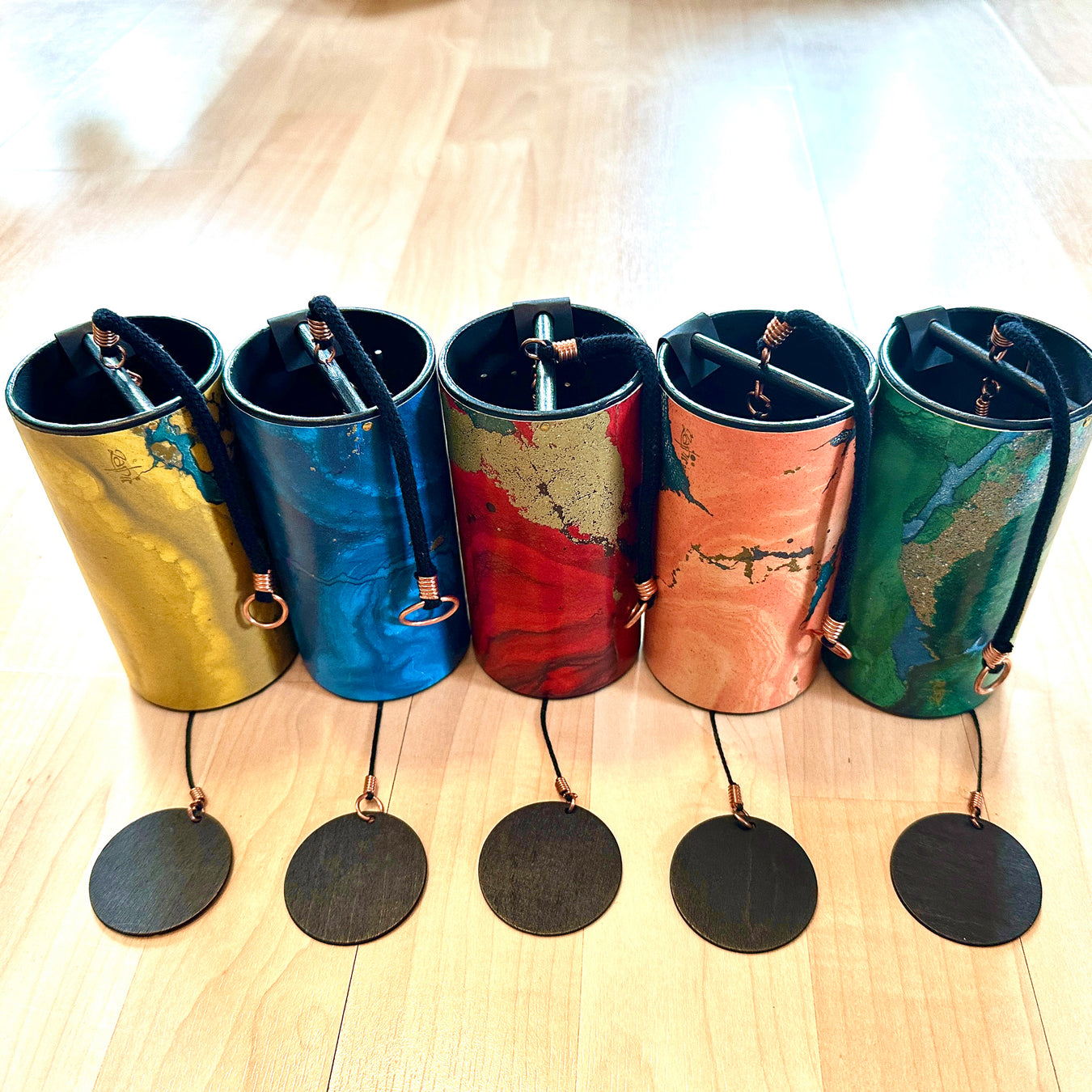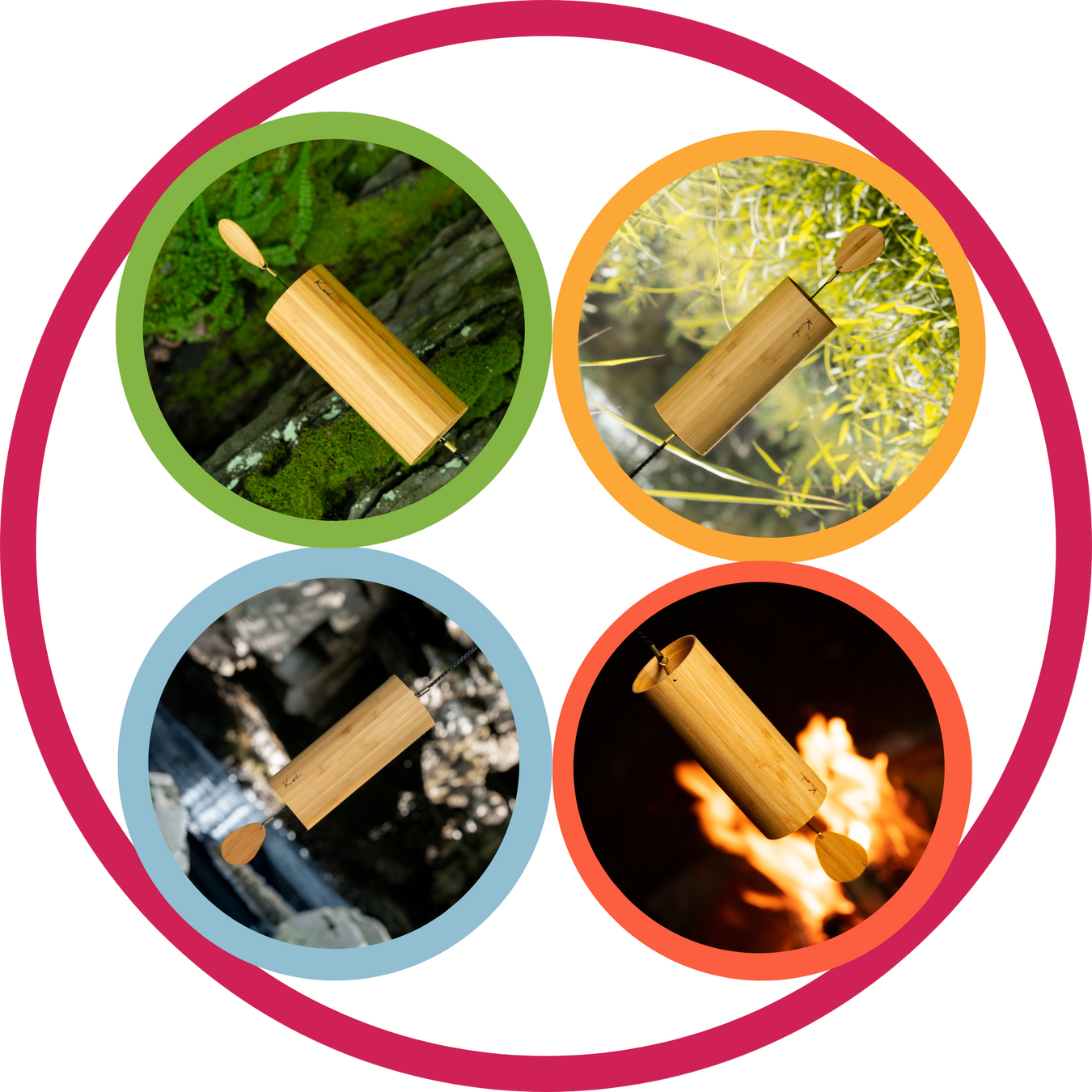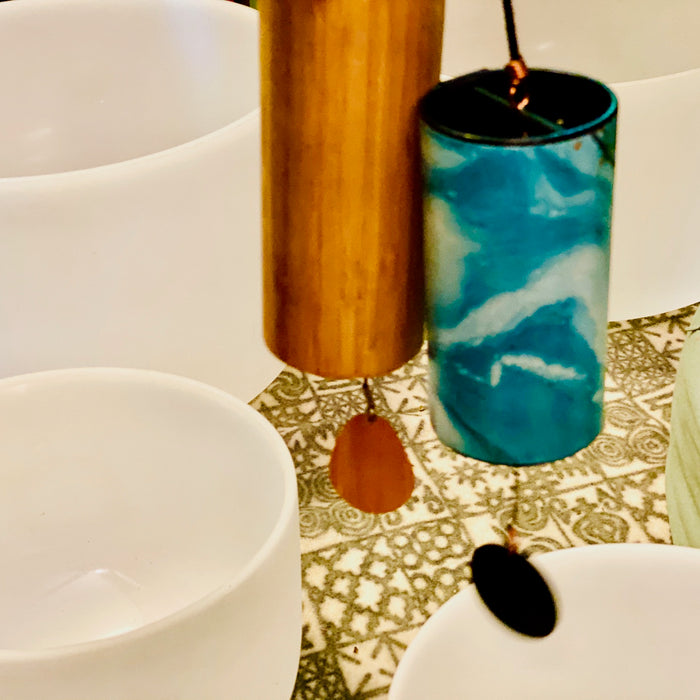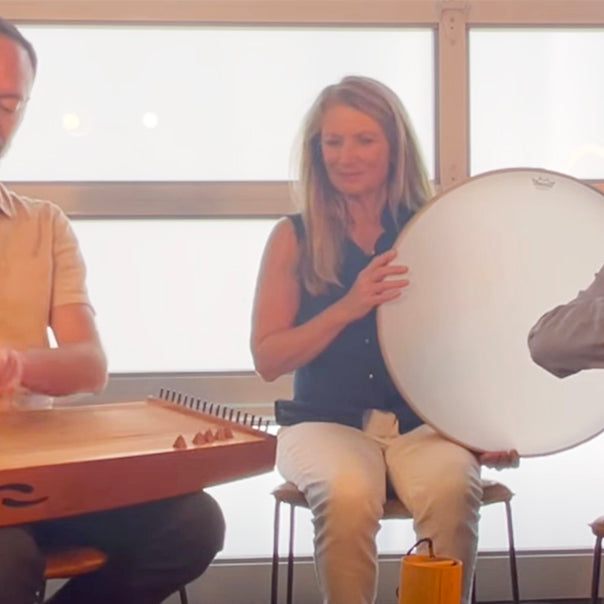
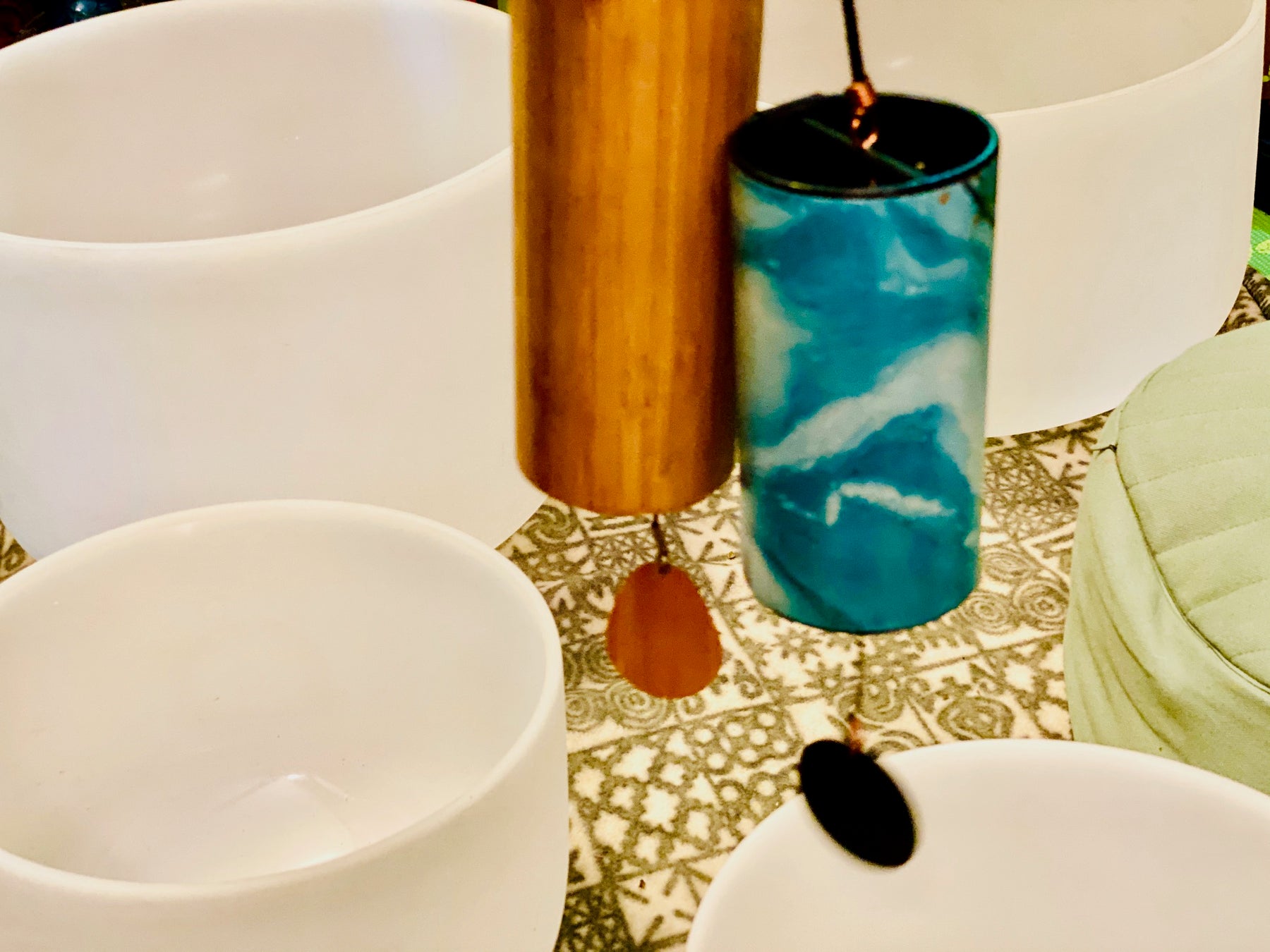
Skillful Ways to Utilize Hanging Koshi Chimes & Zaphir Chimes for Sound Baths, Sound Meditation & Sound Journeying
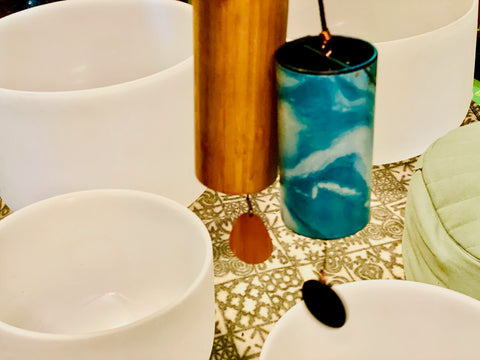
By: Joule L'Adara, MFA, Feeltone Trainer & Sound Facilitator
Koshi Chimes & Zaphir Chimes:
Koshi and Zaphir hanging hand chimes are made in France and have become absolute essentials for your sound therapy instrument collection whether you are offering sound baths, sound meditations, or are a sound healing practitioner working with clients one-on-one. These beautiful instruments are so easy to play: all you have to do is pick them up and move them around to activate the gorgeous combination of tones created by a glass bead ringing against metal tines of different lengths, producing etherial melodies. However, simply playing them does not mean you're necessarily creating a therapeutic or meditative experience. In order to use these instruments skillfully and masterfully for a Sound Meditation, Sound Bath, or Sound Journey, a deeper level of sonic awareness is necessary.
It’s important to remember that all sounds will be received differently by different individuals hearing them: depending on what they’re feeling or experiencing in the moment and what they’re needing to receive. Thus, there is no “one size fits all” sound offering. However, how you play certain sounds will create different invitations and bring about different possible inner reflections in your listeners.
When people are listening in a relaxed state while laying down or sitting in meditation - they will be more sound sensitive. In this context, leaving a lot of room for space in between sounds and playing simple sound combinations will be a much more profound than it is in our ordinary everyday awareness. When the mind is in an altered state or "Non-Ordinary Consciousness" (known as NO - a kind of trance or altered brain wave activity brought about by deep relaxation), one often feels the reverberation time between tones in a continuous and powerful way. The silence between notes becomes full with sensation, emotion, and meaning. Creating too much sound - or too many sound variations all at once - can feel chaotic, overwhelming, and even produce anxiety in the listener who is receiving sound in this deeply vulnerable state of heightened energy awareness.

Here are a few simple guidelines and best practices to remember when playing for receivers who have been induced to relaxation and deeper listening:
Hold the chime by the ring and very gently move your hand and arm just slightly to undulate the string activating the instrument. After the glass bead taps a few metal tines, relax your arm, allowing the sound to reverberate for a bit and wait for the chime to get quiet before initiating movement again. It's in the space between the sounds that contemplation in the mind and integration in the body takes place. If there is too much sound or too many different sounds without space in between, the invitation to be within the inner space is not there, and the meditation or introspection will not be as deep.
To gain even greater control over which specific sound is activated in each chime, try this: instead of holding the ring on the end of the string, you can hold the top of chime itself between your fingers, directing your gaze inside the tube and moving it such that you direct which specific tines will be struck. In this way, you can mindfully play notes in the order you choose (and pause the swinging of the bead to rest in between playing tones.) This method takes a little more practice and coordination, but you gain greater control of which tones you are activating in any given moment.

If you prefer to play by holding the loop on the end of the string, make sure you aren't constantly shaking the chime if you're wanting a meditational effect. Holding the loop will offer a more "twinkly" effect with a rapid succession of notes, but you have less control over which tines will be activated so you must leave space from time to time for the tones to ring out and reverberate.
If you do choose to purposefully continuously agitate the chime, know that shaking it intensely and robustly will create a very activating sound! Depending on the listener, this could be highly irritating or it could be energizing and thrilling! Playing in this way can be great at the beginning of a session accompanying the spoken invitation for people to shake or wiggle their bodies to release tension. One can also choose to play this way towards the end of a session after you've been playing more trance-inducing instruments such as bowls, gong, or monochord - utilizing the melody of the chime in an active way to help bring listeners back from an altered state into more of a waking ordinary state of consciousness.
More forceful shaking of the chimes can also be used in the middle of a soundscape, as a way to bring about a mindful intensification and possible emotional catharsis. If this is the invitation you wish to create for your listener, don't just start making robust sounds suddenly as they will seem very jarring. Make sure you build up to this moment by creating a gradual intensity of volume and pressure (possibly combining with other instruments) over time, so that the sound traveler is carried by a crescendo wave. Keep the apex of the full intensification moment (of hard-core jingling!) brief for your listeners, followed by a moment of release back into sounds that create repose - such as long quiet tones. This will allow space for the integration of whatever emotions or energy you are sonically asking to be released. It's the equivalent of asking participants to momentarily tense up their muscles as tight as possible, and then release them into relaxation. If your listeners understand this is the intention, they will endure the building tension, trusting you as their guide to lead them over an arc that will ultimately help them relax. (This is a very different effect than if the sounds are too intense for too long a period of time without directive purpose, which can bring either discomfort that takes listeners out of the experience, or lead them deep into distortions that are disorienting.)
What’s most important is to remember that while these instruments are easy for anyone to play, there are subtle differences in how you play them that will bring about different subtle experiences in the listener. Less is often more! Experiment with your own reactions to the chimes to determine what the possibilities are for those who will be receiving your chime sound offering. Create a sound lab for your own experimentation and have others play while you are listening in a relaxed state. (This is especially useful if you're an experienced sound facilitator! How long has it been since you experienced listening and receiving your own instruments?) Notice how completely different the chimes sound when you are standing and active vs. sitting in contemplation vs. laying down in relaxation! This means that while you're playing and facilitating, you can't always rely on your in-the-moment experience of how it sounds to you. You must remember what it's like to receive in a relaxed state, imagining what the receiver is hearing and sensing - something you're only capable of doing if you've relaxed and received the sound in an altered state of consciousness often enough yourself. The more you experiment with receiving sound in this way, the more skilled you'll become in offering this sound to others.

